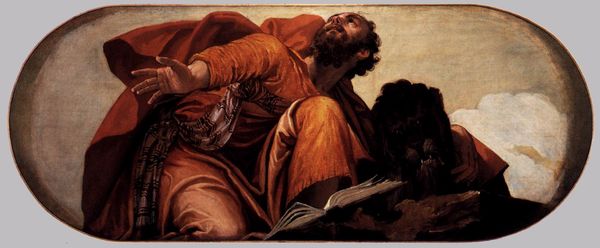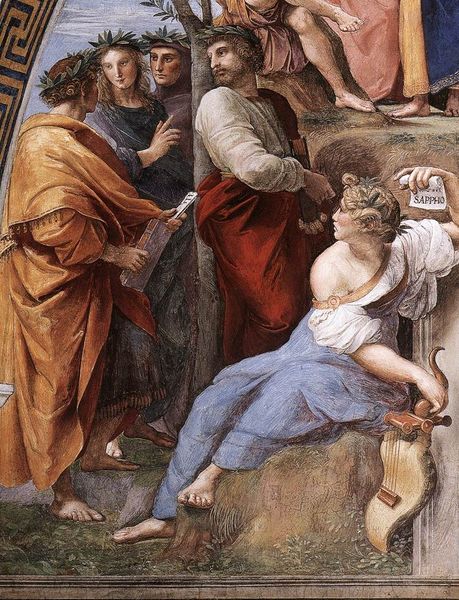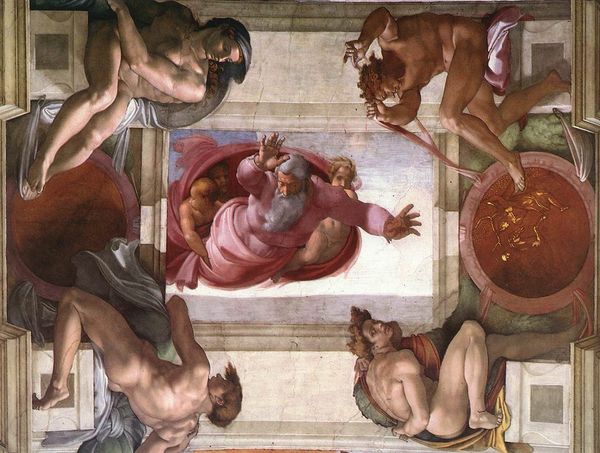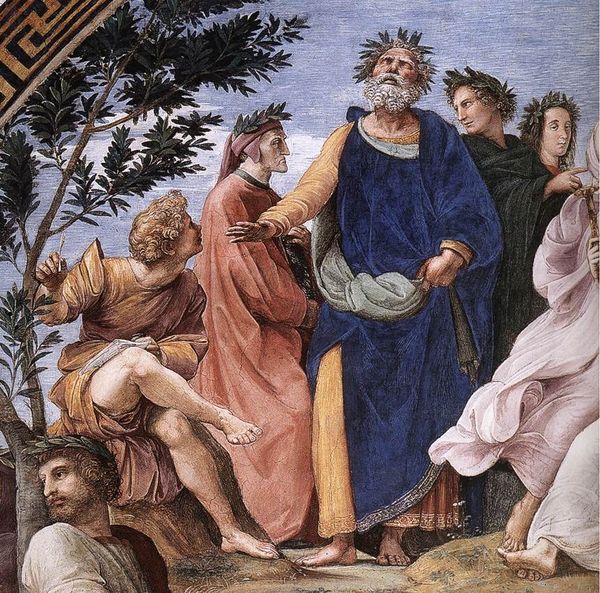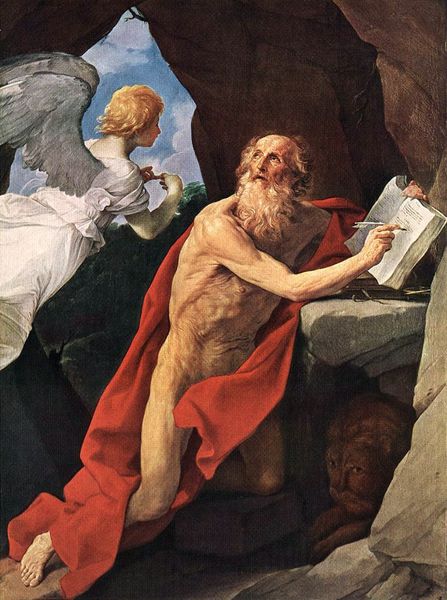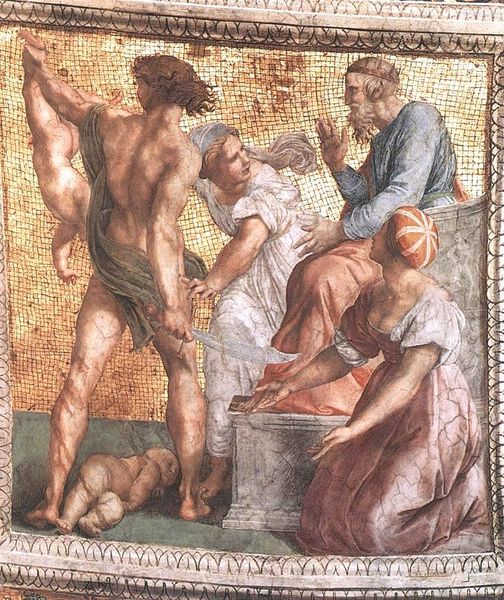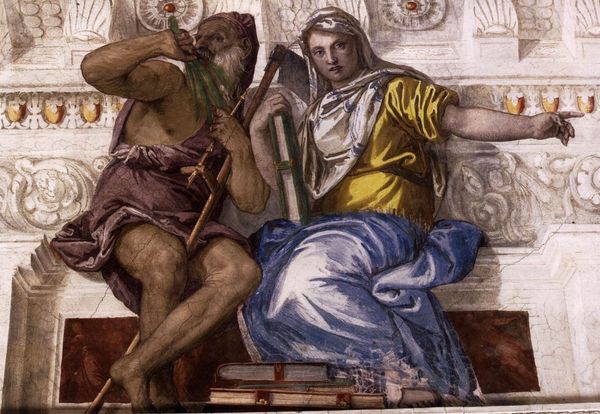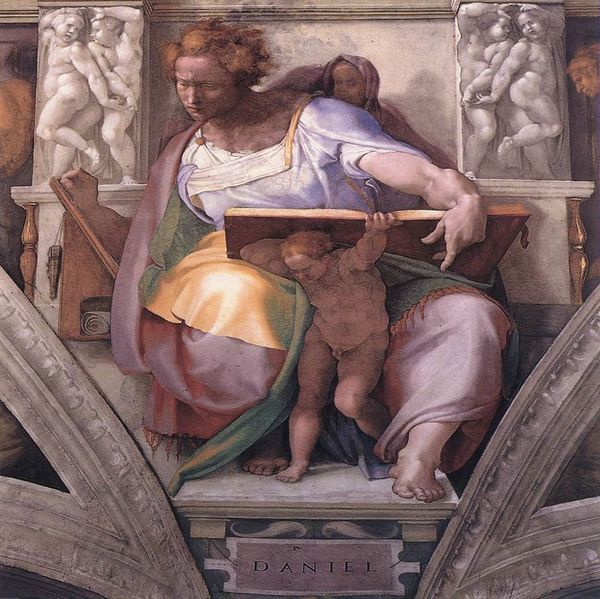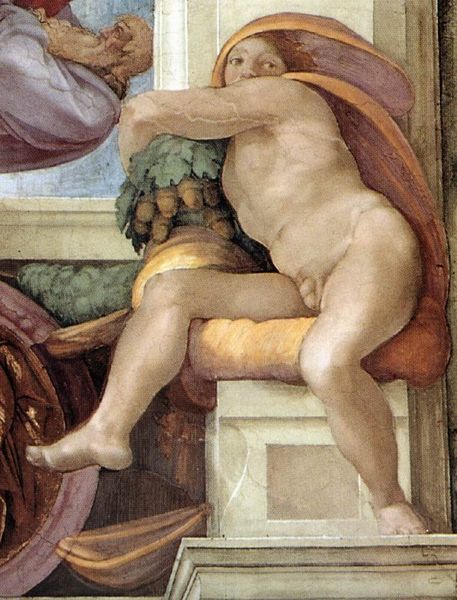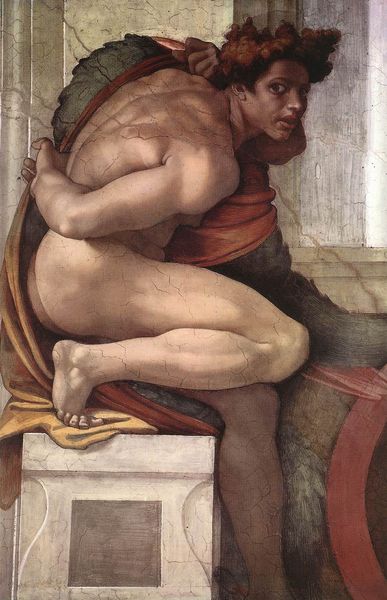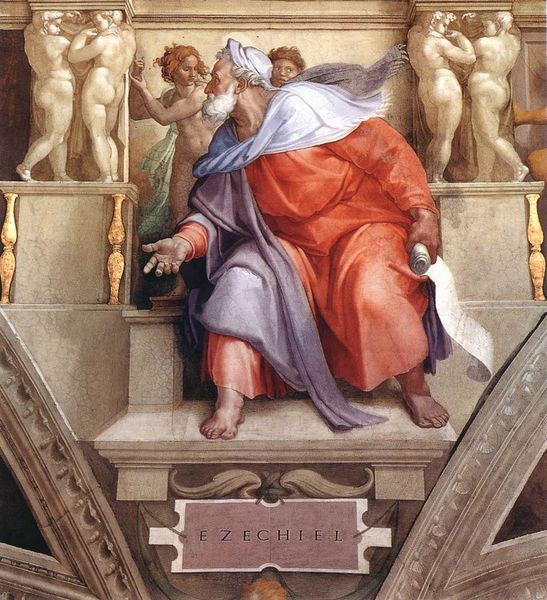
painting, oil-paint
#
portrait
#
high-renaissance
#
painting
#
prophet
#
oil-paint
#
figuration
#
oil painting
#
history-painting
#
italian-renaissance
#
portrait art
Dimensions: 250 x 155 cm
Copyright: Public domain
Editor: This is Raphael's "The Prophet Isaiah," painted around 1512. The prophet looks powerful and pensive, almost burdened by the text he holds. I’m curious, what do you see in this piece beyond the High Renaissance style? Curator: This work, positioned in the Vatican, reflects a complex intersection of power, religion, and artistic patronage. Considering its location near Michelangelo's Sistine Chapel ceiling, it prompts questions about artistic competition and influence during the Renaissance. How does Isaiah, a figure from the Hebrew Bible, become recontextualized within this epicenter of Christian authority? Editor: That’s fascinating! So, it's not just a portrait of a prophet, but also a statement about cultural appropriation? Curator: Precisely. Furthermore, we have to consider the visual language. Isaiah is rendered with a muscularity that is undeniably reminiscent of Michelangelo, blurring the lines between artistic inspiration and potentially a deliberate visual dialogue on masculine power. Consider, too, how the presence of classical motifs alongside the Hebrew text positions this image within layers of cultural translation. What message is being conveyed through these visual juxtapositions? Editor: So, Raphael is perhaps suggesting a synthesis of different traditions? Curator: It’s a potent claim to universalism under the umbrella of papal authority. It subtly integrates Jewish history into a Christian narrative, potentially overlooking the nuances of the original context for the sake of legitimizing Papal authority. But we must ask: At whose expense does this “integration” occur? Editor: That gives me a lot to think about regarding how art serves the status quo. I always considered High Renaissance art "beautiful," and didn't critically consider the message and purpose that art conveys about the social environment that it reflects. Curator: Exactly! Examining art through an intersectional lens allows us to unveil hidden agendas and reclaim silenced voices within these narratives. This piece speaks volumes about the construction of power and the negotiation of identities in the Renaissance.
Comments
No comments
Be the first to comment and join the conversation on the ultimate creative platform.
